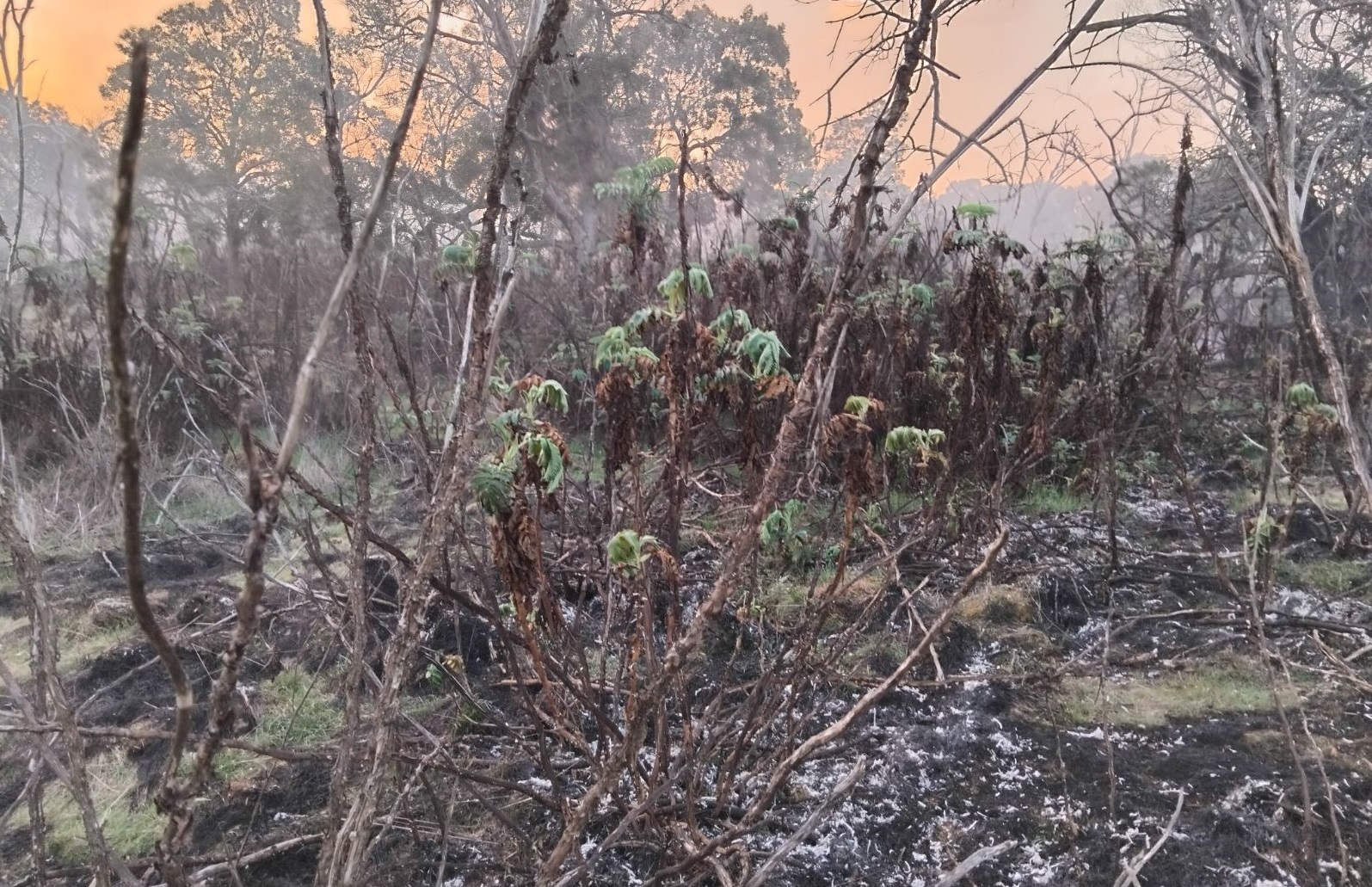 South African honeybush
South African honeybush
On Sunday 13 May, CFA along with Forest Fire Management Victoria (FFMV) and the Gunditj Mirring Traditional Owners Aboriginal Corporation, carried out a controlled burn at Lake Gorrie.
Lake Gorrie is near Bessiebelle in the south-west of the state. The area around Lake Gorrie is part of the Budj Bim Cultural Landscape, which is a World Heritage listed site. The purpose of this burn was to help eradicate the invasive South African honeybush plant species.
CFA was asked to establish a hose lay sprinkler system to reinforce the northern boundary of the planned burn. Due to the challenging stone terrain, constructing a mineral earth line around the burn area was not possible. The hose lay system provided an environmentally friendly alternative for creating a control line.
CFA members from District 4 contributed their expertise in pumping and hose lay application to optimise the effectiveness of the sprinkler system.
“Firstly, a big thank you to everyone who was involved in the process of getting the Lake Gorrie burn up and everyone who was involved on the day,” Leroy Malseed from the Gunditj Mirring Traditional Owners Aboriginal Corporation said.
"The result on the day couldn’t have been scripted any better and it felt like the ancestors were working with us to bring it all together."
The sharing of skills and knowledge between those involved was a great learning experience and continues to strengthen the strong partnerships we already have.
"To the mob that was able to attend on the day and to see it all in action is great learnings for us going forward and it was great to have a couple of Eastern Maar mob attend the burn as part of the Otways Taskforce who attended the burn and assist us on country.”
From a CFA perspective, the day served as a testament to the partnerships we have established and continue to strengthen with our partner agencies and the Traditional Owners of Gunditjmara Country. Being on country and learning from our Traditional Owners significantly enriches our knowledge.